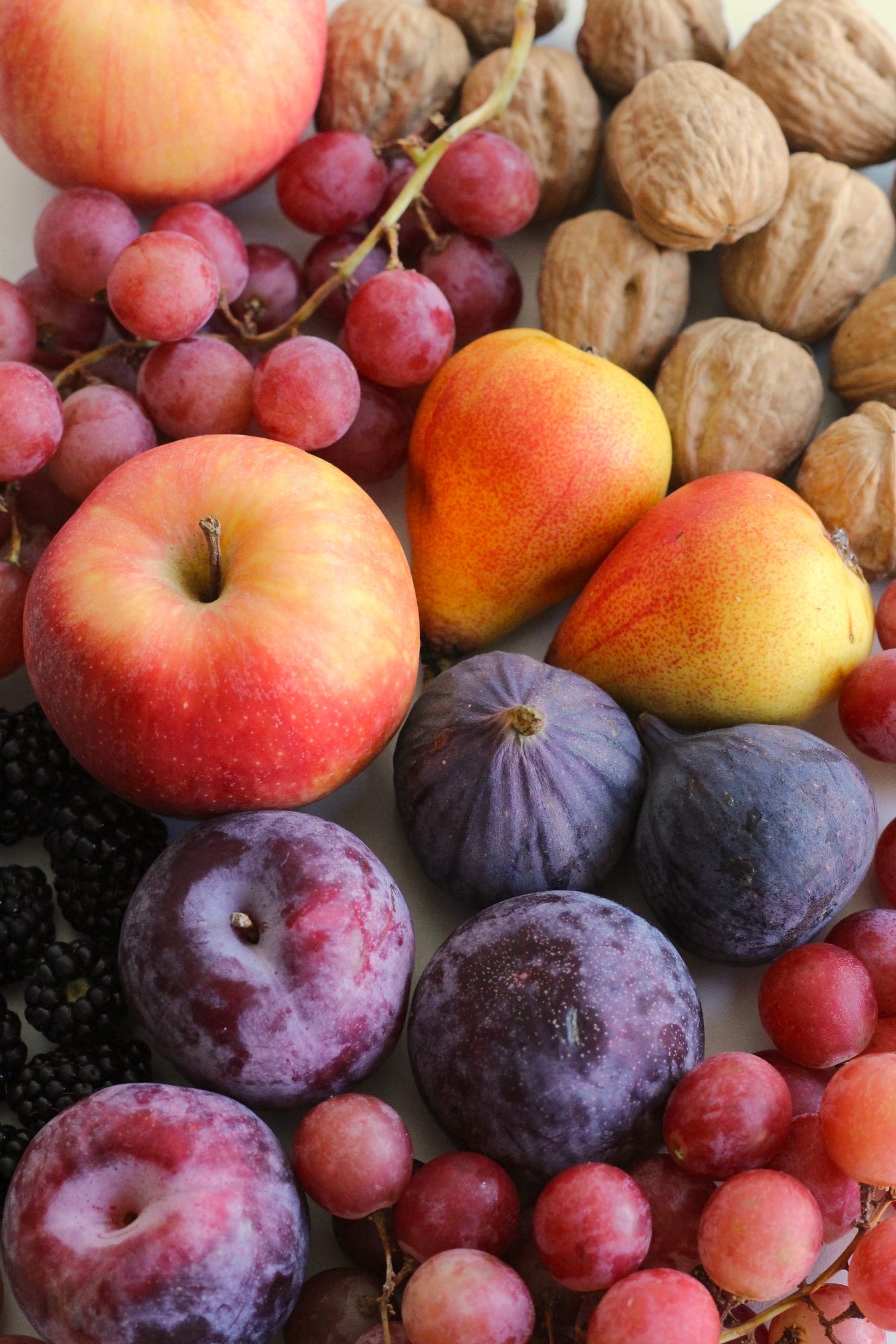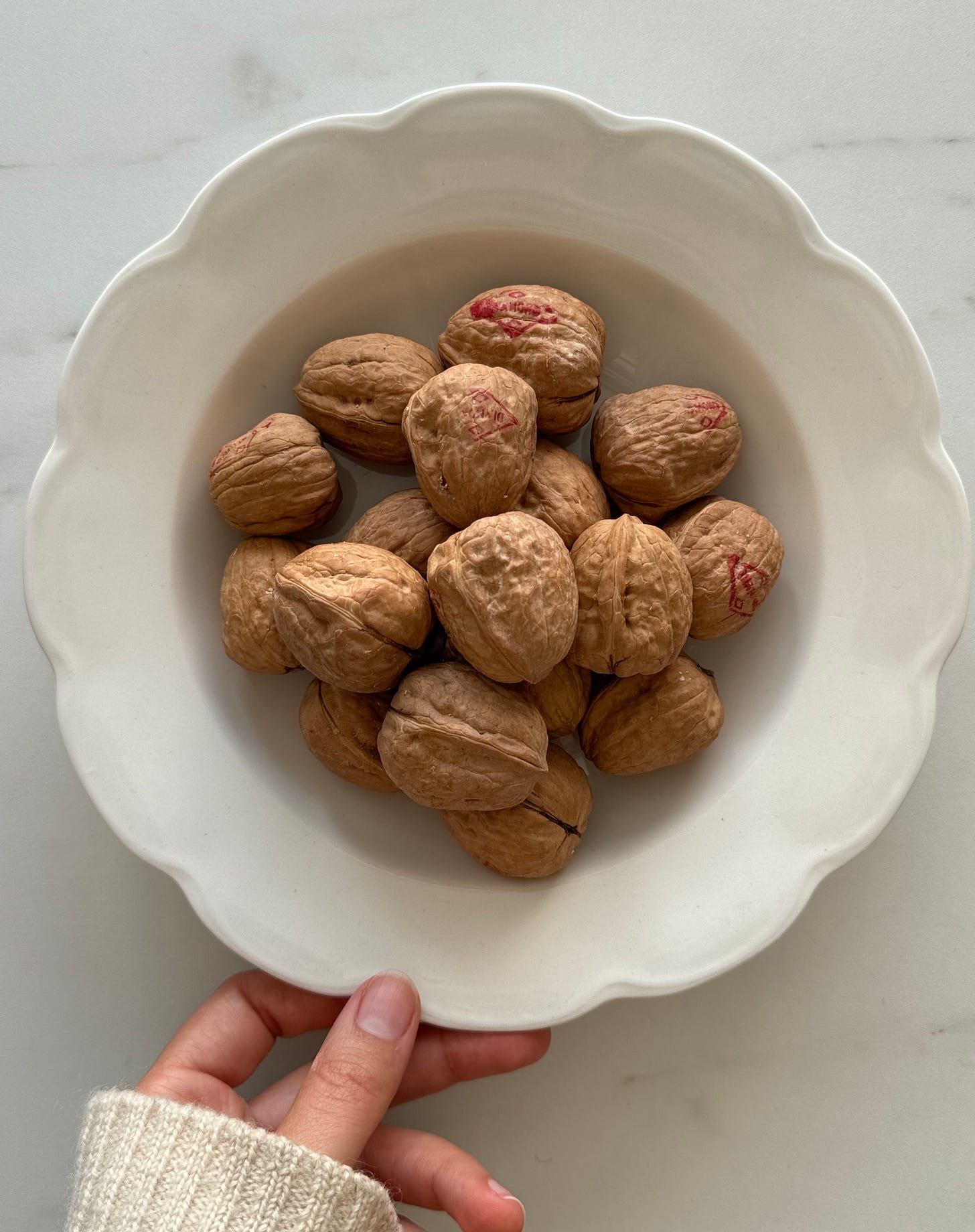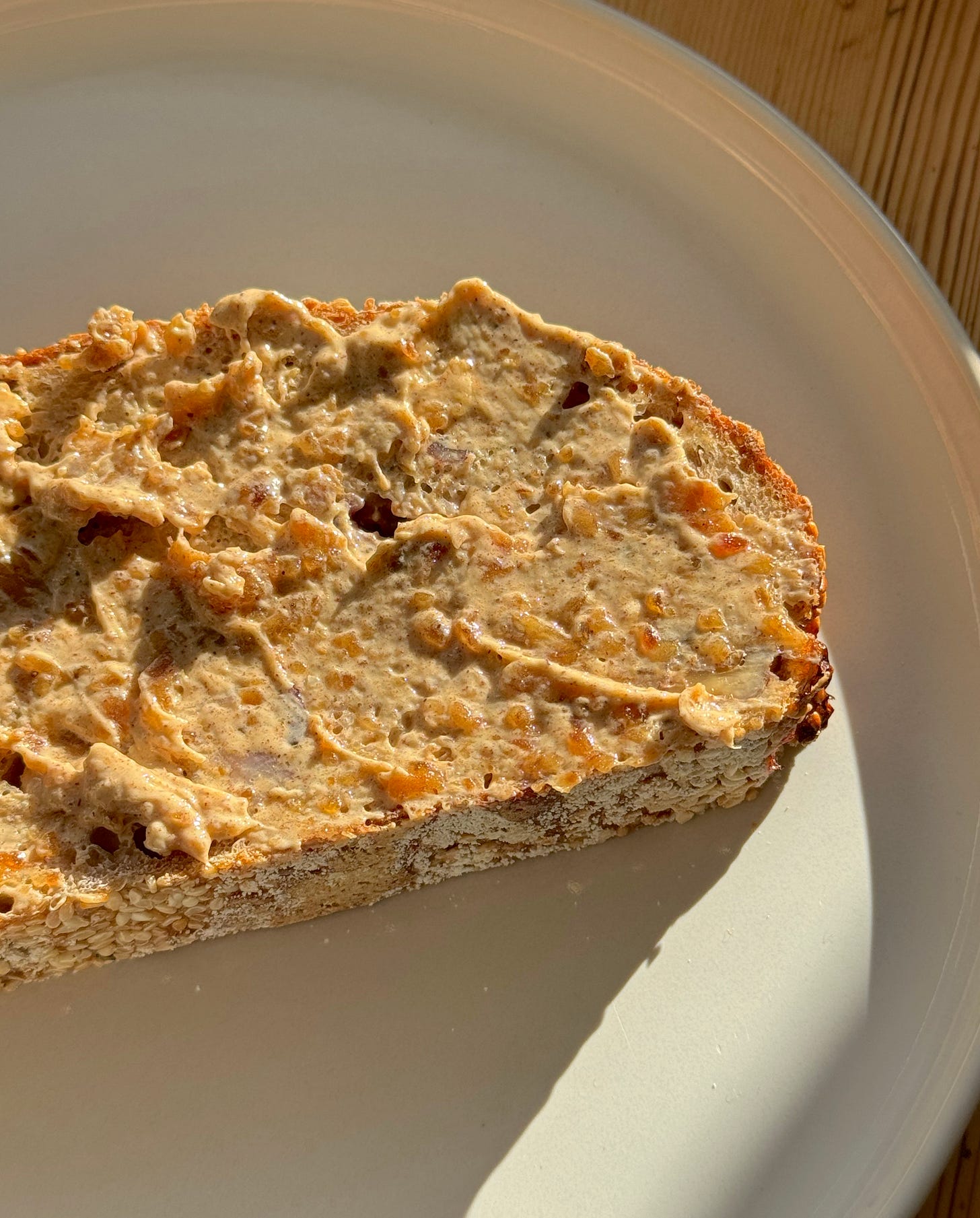👋+: Fig Walnut Bread & Cinnamon Date Butter
autumn is here! + my top 3 cookbook recommendations
Allô! 👋
Welcome (back) to seasonal sundays, the weekly-ish supplement to good food at home, where we take a closer peek at produce at its peak — with a short introduction, at least one recipe, and a (sometimes related) cooking Q&A. If you’re a new subscriber and would like to read the previous issues, you can click here to find them!
Happy Sunday, and happy first day of autumn!
I do hope you all had a lovely summer, as today officially marks the beginning of harvest season.
So far, the transition to fall has been easy for me; it's felt autumnal here for some time. The hillside I live on has lately been draped in a dense, gloomy fog each and every morning, and any stroll through the neighbourhood now inevitably involves the spotting of fallen apples and glistening rosehips nestled among orange-tipped trees. The apples and rosehips will linger a little while longer, but for now, my thoughts — and my appetite — are turning toward blackberries, Concord grapes, plums, figs, and dates. These are, after all, the treasures of the season, and until autumn truly settles, they’ll have my full attention.
In today’s newsletter, we’ve got an intro to shopping for dates as well as a tip for cracking walnuts with ease and economy, followed by two recipes to gently welcome the season. To finish, a reader asks me which three cookbooks I’d consider my favourites, and, naturally, I can’t help but answer with five.
As always, I hope you’ll enjoy the read and the recipes.
Wishing you all a deliciously cosy start to the season,
— Simone
P.S. remember how you were split on favouring weekly versus fortnightly seasonal sundays dispatches? I’ve been quite enjoying the current schedule, but I’d love to know how you feel about it — let me know what you prefer in the new reader survey!
As the seasons shift, so too do the colours of our food. Although every time of year offers its own rainbow of produce, each also seems to come with a dominant palette — what was once mostly pale green, pink, and yellow in spring, has deepened through summer into vibrant greens and bright reds, and now turns to dark oranges and dusky purples as September draws to an end.
Two fruits that are particularly wonderful to enjoy “fresh” at this time of year — and especially together — are dates and walnuts.
HOW TO SHOP FOR DATES
Dates come in many varieties but are generally sold in three forms: dried, semi-dried (often labeled “fresh”), and truly fresh.
Fresh dates that are still unripe will be green or pale yellow, while fully ripened ones will take on a deeper, golden hue, like the ones pictured below. At their peak of ripeness, these dates are fleeting, generally only available from late August to September, and can be difficult to find (if dates don’t grow in your country, foreign food stores and specialty grocers will typically be your best bet). When at their peak, these golden gems are crisp and slightly sweet — watery and crunchy if you're lucky, though they can have a tannic sharpness like an unripe persimmon if you’re not. Their flavour, to me, is a delicate mix of pear and honey, with hints of apple, coconut, and sugarcane — a true seasonal delight.
These dates can be hung up to dry in a well-ventilated space, much like lavender or onions that you might want to cure so that they can last longer. Over time, they’ll darken and sweeten as they lose moisture, slowly transforming into the cured, sun-ripened, semi-dried dates with which most of us are familiar.
Often labeled “fresh”, dates at this stage are no longer crunchy but soft, rich, and gooey. These dates are best kept refrigerated in an airtight container as they still hold enough moisture to make them perishable; stored properly, they can last up to six months. Every now and then you may encounter a semi-dried date that has gone off due to excess moisture fostering mould — a sign of spoilage you'll recognise by blackness inside — so it is good practice to always tear a date open and quickly inspect its inner flesh before digging into it with your teeth.
Finally, there are dried dates, the ones with the longest shelf life: these contain the least amount of moisture and tend to be more chewy rather than syrupy. You can keep these at room temperature for up to 6 months, or even a year in the freezer if you like. Their flavour can be a little muted compared to dates at the semi-dried stage, but a quick soak in just-boiled water (or a splash of something more indulgent) is a common method for quickly restoring a bit of lost moisture, as well as reviving some of their soft, luscious sweetness.
In September, fresh and semi-dried dates are seasonal delicacies, but dried dates are a year-round treat.

TIP: HOW TO SAFELY SHELL WALNUTS
While walnuts are available year round, their main harvest runs from mid-September to early November in the Northern Hemisphere (in the Southern Hemisphere, the season runs from mid-March to early May). Freshly cracked walnuts can be a real autumn indulgence, well worth making time for — especially if you know how to crack them cleanly, without making a big mess or needing to buy a single-purpose tool for the job.
To crack open a walnut in its shell, all you need is a butter knife (and perhaps a small dishcloth to steady the nut and protect your hand, especially if, like me, you're occasionally a bit clumsy).
To open the shell, simply begin by finding the seam on the widest end of the shell. This seam should be just wide enough for you to wedge the tip of your butter knife into. Gently insert the knife, then twist it carefully, prying the halves apart. With a little patience, the shell will give way, leaving you to fish out the walnut inside. If you're lucky, you might retrieve the walnut half in one beautiful piece — though more often than not, you'll need to break it up a bit to free it from the shell.
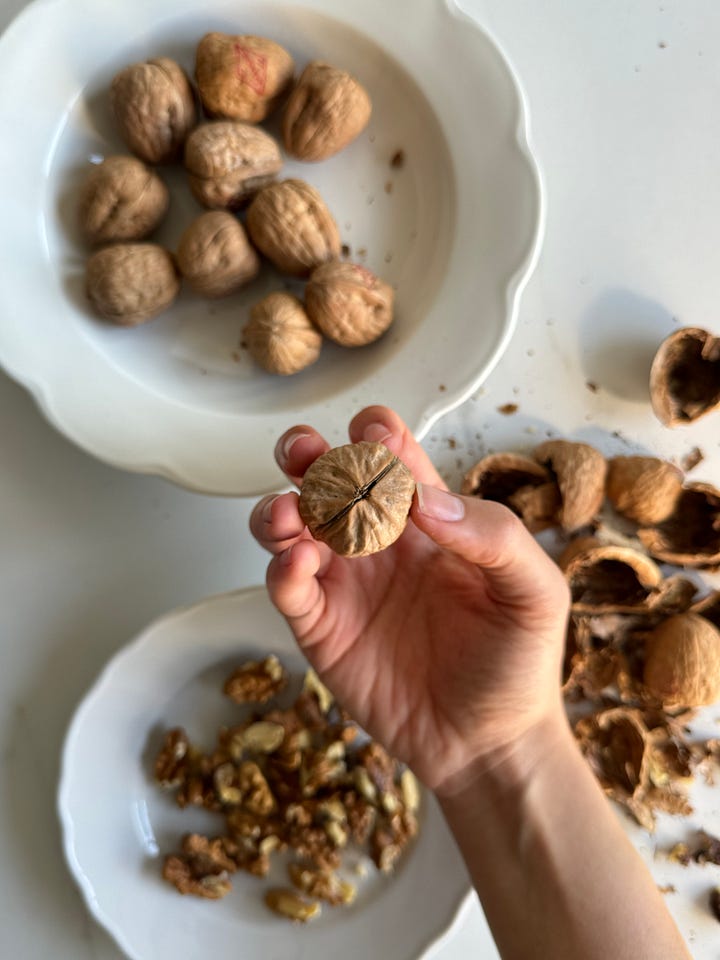
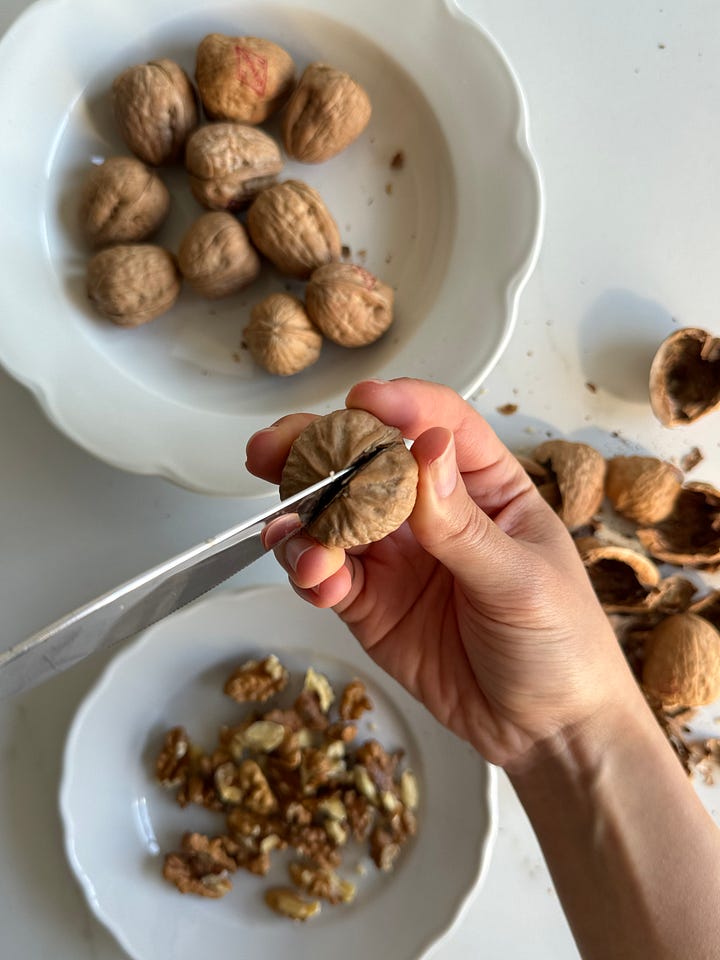
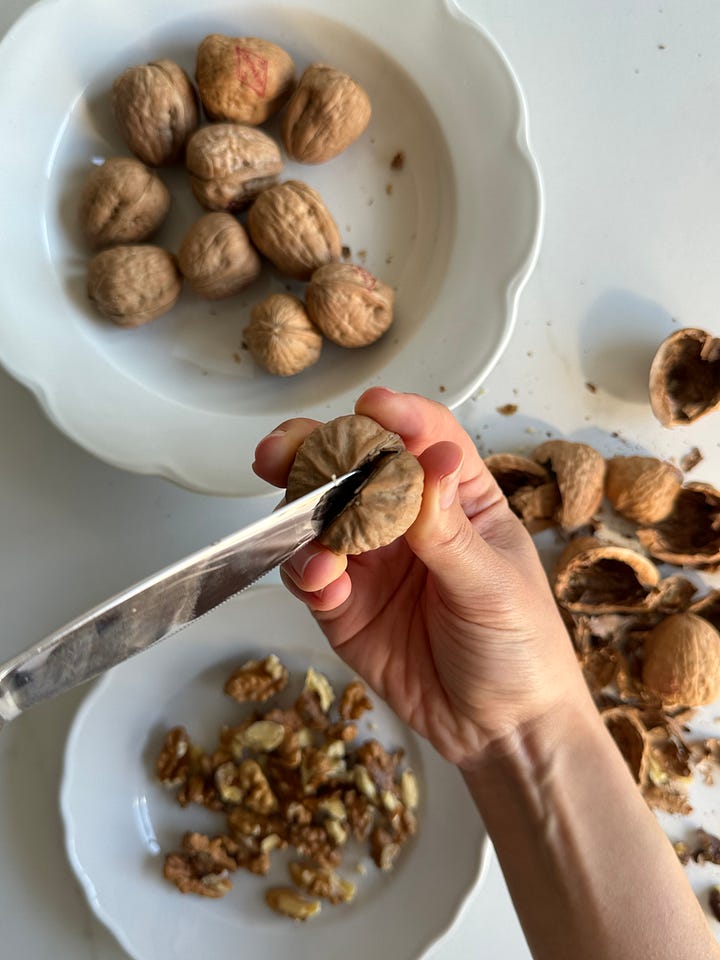
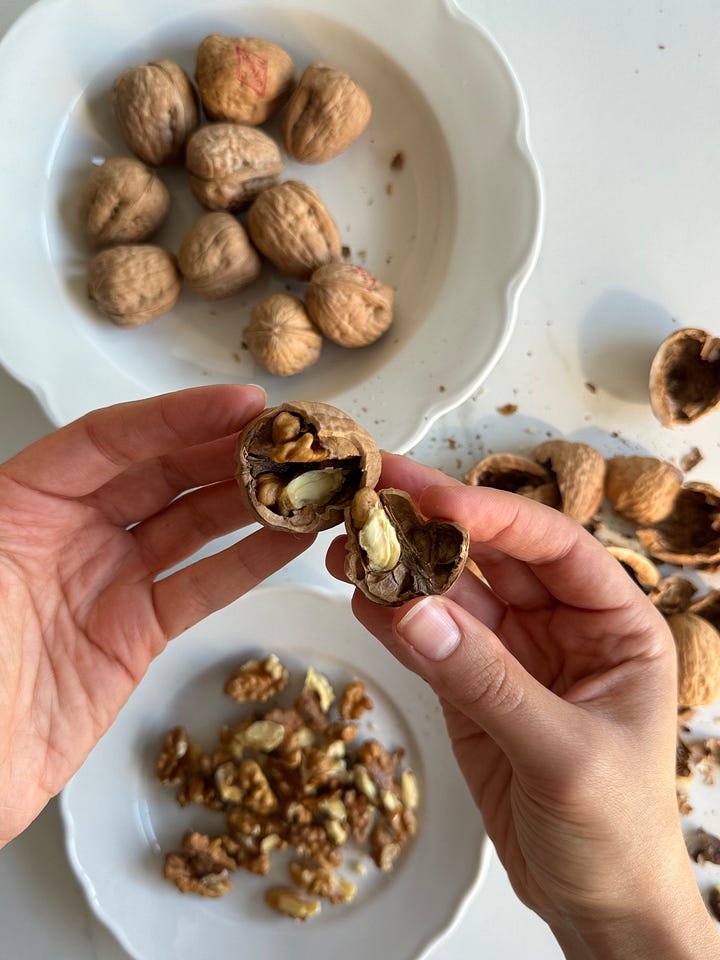
A chill in the misty air brought on a hankering for raisin cinnamon bread the other week, something I don’t think I have eaten for years (growing up, we always got the Sun-Maid brand) and it just so happened that I had just bought some dates. I made a cinnamon-date-walnut loaf, adored it, then set my sights on a fig and walnut number. Even better.
Below is the recipe for a compound butter that tastes like cinnamon-raisin (but better), for when you don’t have the time or inclination to make bread, or would prefer to enjoy it on something else entirely instead (say, oatmeal, pancakes, steamed or roasted sweet potatoes, waffles, crumpets, or even a thick slice of brioche given the indulgent French-toast treatment).
If you have sourdough starter at home and are looking to have some fun with inclusions, I’ve got you covered on that front too: this week’s second recipe is for a fresh fig and walnut bread — though you could make it a date, cinnamon, and walnut loaf instead if you prefer. [Both recipes available in printable PDF form below.]
cinnamon date butter ✨
This recipe takes very little time to come together, however it does require a tiny bit of foresight: you’ll want to leave your butter out at room temperature for this to work properly (please don’t be tempted to speed up the process by putting cold butter in the microwave, on a sunny windowsill, or under a hot bowl — it’ll melt unevenly and just won’t be the same).
note: as always, use the ingredient measurements as guidelines or points of reference, not incontrovertible law; taste and tweak to your liking!
CINNAMON DATE BUTTER
makes approx. 6 Tbsps
INGREDIENTS
Keep reading with a 7-day free trial
Subscribe to good food at home to keep reading this post and get 7 days of free access to the full post archives.





